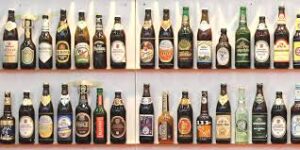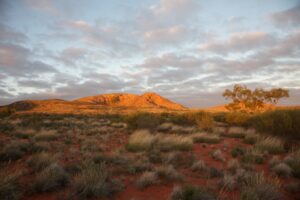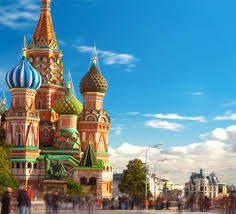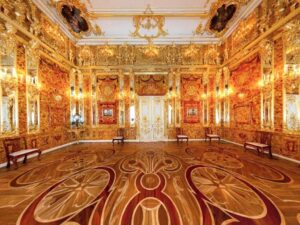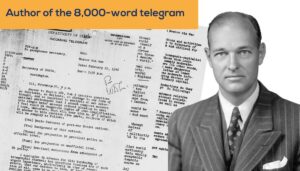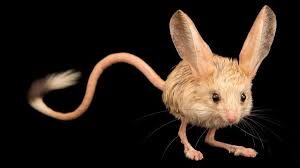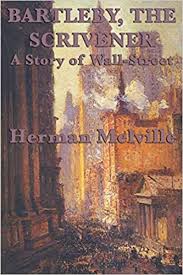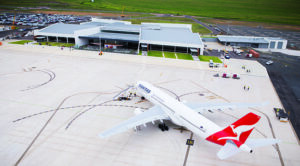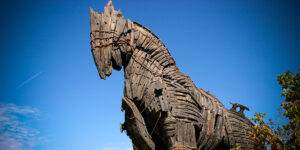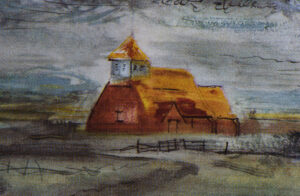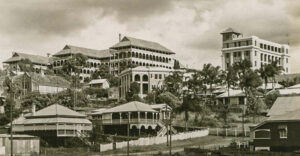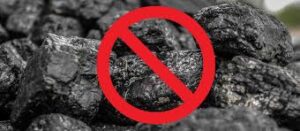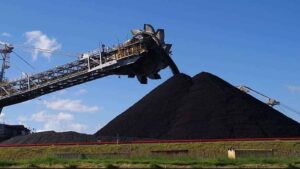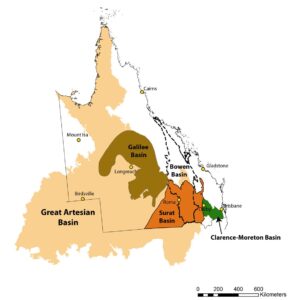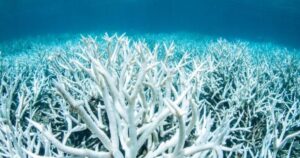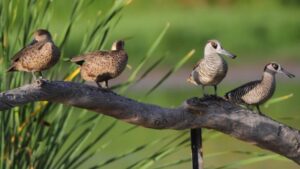“The label racist is not one I would apply like that,” Garland said evenly — without a hint of are-you-a-dolt? in his voice. “Implicit bias just means every human being has biases. That’s part of what it means to be a human being. The point of examining implicit biases is to bring our conscious mind up to our unconscious mind and to know when we are behaving in a stereotyped way. Everybody has stereotypes. It’s not possible to go through life without working through stereotypes. Implicit biases are the ones we don’t recognize. That doesn’t make you a racist.”

In his current Senate confirmation hearings for Attorney-General, Merrick Garland shows in this above response to one of those rubber red-necked Republicans what an acquisition he would have been to the US Supreme Court if it had not been for the Kentucky Kernel, Mitch McConnell refusing to let his nomination be considered. Yes, the sobriquet kernel. Is that not a nut case?
The Sewers of Canberra are not Backchannels
And less welcome sexual attentions in the form of sexual harassment also have been a standing problem. In decades past there was a discreet backchannel operating between the prime minister’s office and the opposition leader’s office to keep sexual misconduct in check. Each side kept an eye out for rogue behaviour by members of the other and duly alerted the leaders’ offices accordingly. That system fell into disuse years ago.
I was surprised reading that piece by Peter Hartcher in the Sydney Morning Herald. Given that I was very senior in one of those offices, the “backchannel” must have been sealed up at the time I was there. I knew of no conversations. It was a time when Parliament House was much smaller, and there were few offices which were not the size of shoeboxes; people lived cheek by jowl. Yet it was a time when there was considerable fraternisation across all political parties and the media, with the non-members bar the central meeting place. Parliamentarians came down rarely.
The Lobby was the place where there was considerable mixing, and I remember one prominent journalist supressing his laughter. Something was happening at a table behind us. Judi Morosi was feeding Jim Cairns. Well known non-relationship, as there was considerable smokescreen about extra marital calisthenics. I was not around during the Ainslie Gotto saga, but hardly a time I thought when Gorton would have been exchanging notes with Whitlam. These were the few associations then which attracted notoriety in the media.
The number of staff was far smaller, but even so, there were not many inglenooks in the old Parliament House where inappropriate behaviour would not be discovered. In fact, given the intimate environment, not much was unknown around Canberra. There were a number of consensual arrangements, but drunkenness was more the problem.
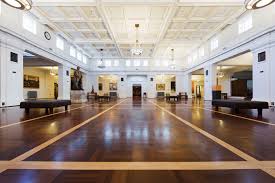
It was also somewhat ironic that in those days, having finished in the office when I left Parliament House often after 1.00 am, it was just a wave to the guys on the reception desk at the King’s Hall entrance. King’s Hall was a very open space – especially at 1.00 am. Any antics would thus have been on a large stage.
The advent of security, presumably at the Ministerial entrance of the new Parliament House, did not save Brittany Higgins; as has been reported the security even facilitated the entry into the Ministerial office, although it must have been clear that she was too drunk to sign her name properly. These days it would appear that there is a very short backchannel between security and coverup within the burrows of government
Facesaver?
To my everlasting shame, I have never used or looked at Facebook. I must have missed something judging by all the furore. Facebook is a free service. I choose not to use it. I remember when Facebook first came into prominence at a time when Zuckerberg had not yet worked how to make it profitable. It was originally a means by which a kid in college could communicate without the distasteful business of actually meeting somebody face to face. There was more than a hint of misogyny in the original motivation for Facebook.
Zuckerberg introduced advertisements into Facebook very early on after he launched it in 2004, but not until 2007 did he launch the first co-ordinated advertisement campaign.
He said at the time: “The core of every user’s experience on Facebook is their page, and that’s where businesses are going to start as well…The first thing businesses can do is design a page to craft the exact experience they want people to see.”
Before he even made money, there was a film made in 2010 about Zuckerberg called “The Social Network”.He was only 26. Aaron Sorkin, the guy who wrote “West Wing” wrote the screen play and promulgated the Zuckerberg myth – the socially awkward nerd who created the greatest social communication platform the World has ever experienced. To put that into perspective, Rupert Murdoch was a running a small Adelaide newspaper when he was 26.
Zuckerberg did not start making money on Facebook advertisements until 2012, and apparently the business has worked. He never promoted Facebook as a news channel. It just happened that organisations jumped on it because of the popularity of that and other platforms the company acquired. In initially opposing the Australian law, Facebook argued that publishers willingly post news to its site, which helps them reach a larger audience. It says that the model differs from Google’s, as publishers don’t voluntarily provide articles that appear in the firm’s search results. The Australian proposal penalises Facebook for content it didn’t take or ask for.
As the Facebook boss in Australia went on to say – “The proposed law fundamentally misunderstands the relationship between our platform and publishers who use it to share news content. It has left us facing a stark choice: attempt to comply with a law that ignores the realities of this relationship, or stop allowing news content on our services in Australia.
In the Washington Post this week, Roger McNamee, in reviewing “the current state of play today with the tech industry” has stated “Internet platforms such as Facebook, Google and Twitter aided the insurrection at the U.S. Capitol and have contributed to the slow national response to a deadly pandemic. The algorithms on which the firms rely amplify hate speech, disinformation and conspiracy theories, and their recommendation engines manipulate behaviour because doing so is good for business.”
Has Facebook learnt from the experience with Cambridge Analytica, which shamelessly stole data and manipulated data as part of the Trump 2016 election? Arguably Facebook served to amplify such behaviour and this remains an unanswered question in the reports of this feud the Australia Government is having with Facebook.

Facebook pulled the plug on the news pages, and there was the predictable response of those deprived of a free service. However, it gave Facebook an opportunity to see in the real world what the response was. In fact, the news media responded very quickly, by setting up alternative pathways to Facebook. Therefore, in a far-off country, Facebook was able to sample the reaction and appear to give the politicians a victory.
Zuckerberg is obsessed with maintaining his monopoly. He believes he has the “old media” covered, but by his actions, in a few hours he set up a “wildfire” of innovation to compensate for the loss of Facebook. If this goes on long enough, the next raft of innovators will appear to challenge the Facebook sovereignty.
On Monday, Facebook agreed to the Australian government’s added amendments to the proposed code. That included a two-month mediation period, giving the two sides more time to negotiate commercial deals that could help Facebook avoid having to work under the code’s provisions.
In other words, Facebook has not lost – not by a long shot. They have bought time, and to Zuckerberg, what does he care if Morrison and Frydenberg claim victory. “To me, victory in always unconditional”, Zuckerberg might say.
I still believe that if Facebook is making such big profits in this country, the Government should tax them more than the current 2% for the benefit of the community; not push them into a Mafia-style protection racket to benefit a lot of old men who are on the obsolete side of history. Just the normal lazy politicians not prepared to confront the need for an equable tax. And what they said originally probably remains true. Facebook is expert in gathering data – and they certainly gained some this week in the response to their actions, which they will already be dicing and slicing to work out what is what. Has the Government collected the same data to use in future negotiations?
Quids from Quarantine
Anonymouse
You always know there’s a quid to be made when the big players start to throw their hats in the ring, and in the past few weeks we have had the Wagners in Queensland, Lindsay Fox in Victoria, and now Sam Shahin in South Australia, all wanting to get into the quarantine business. The Howard Springs facility has shown the effectiveness of a low-tech facility offering separate cabin accommodation, individual air conditioning, access to fresh air, and importantly, little requirement for staff to enter cabins while they are occupied; worker accommodation on site is an added benefit. Re-purposed it might be, but it’s turned out to be a good solution. Nevertheless, it is subject to the vagaries of a monsoonal wet season
Wellcamp Airport outside Toowoomba has ‘abundant’ room for the proposed 1,000 bed quarantine facility, with another 300 beds for staff. As noted in an earlier edition of this blog, a Boeing 747 can land at Wellcamp – it was designed for large scale cattle export, avoiding the need to move the cattle through Brisbane. Unlike the backward planning endemic in government circles, Wellcamp has much forward capacity – its terminal is large and there is plenty of space. International flights can go direct to Wellcamp.
The Wagner Brothers own the land around the Wellcamp airport so they could start work immediately – and seemingly they already have the blessing of the Queensland Government.
Lindsay Fox’s Avalon Airport proposal already has the imprimatur of the Victorian Premier, which might well see a sod turned for a facility for up to 1000 international arrivals before the others.
Mr Shahin’s proposal to develop a “purpose built” facility outside Tailem Bend was very promptly booted by the SA Government which then announced the opening of a dedicated CBD hotel for positive COVID-19 cases. The SA Health Minister said the Tailem Bend plan lacked a hospital in good proximity. Tailem Bend’s hospital is not the “level” of hospital required because, according to the SA Health Minister, “If someone develops COVID, they can very rapidly develop to the level that they need an ICU and isolation – Tailem Bend doesn’t have an ICU.” Tailem Bend is one hour from Adelaide on a dual carriageway. The problem with health care perspectives in South Australia government is that it is a health care wasteland once you lose sight of North Terrace. For goodness sake!
All of this raises a few questions:
- If the Commonwealth plans to continue keeping its hands off the quarantine reins, why did it commission a report by former Health Department Secretary and Crown Director, Ms Jane Halton AO PSM, into hotel quarantine?
- Is there an agreed position on the optimum template for quarantine facilities and is there agreement on how long they will be required – something the Australian community isn’t being told?
- The figure of 40,000 Australians wanting to return home has been quoted for months. Why is this number not falling? Given the difficulty of getting an exemption to leave Australia – unless of course you are a celebrity or ex-politician – who are taking up the hotel quarantine places if not returning Australians?
- What is the optimum location for these facilities? Do they really need to be in the middle of the city a block from a tertiary hospital?
- What percentage of COVID-positive cases in hotel quarantine end up in hospital, and of those, what percentage require ICU (and tangentially, if ICU is such a pressing requirement, why not upgrade ICUs in regional hospitals where quarantine facilities can be located)?
Hotel quarantine is now the single source of any new COVID infection in the Australian community. “Escaped” COVID has caused problems in Victoria, South Australia, Queensland and Western Australia, with a greater or lesser impact. Currently Australia faces a hiatus with no new cases. The media is focussing on vaccination. Even with the vaccines rolling out, no one knows how effective they will be at large scale prevention of COVID (as opposed to prevention of serious illness). Quarantine is here to stay for the foreseeable future and is likely to remain the key to opening Australia’s international borders to business and tourists and allowing the Australians overseas who want to return to do so. But it needs to be more affordable and the metropolitan hotel-based quarantine has lost any lustre it had. Did Halton comment on affordability, talk about fair and reasonable charges? See above questions?
The States do not appear in any hurry to hand quarantine back to the Commonwealth; on the contrary, it is the States looking to develop permanent quarantine facilities, presumably with funding by the Commonwealth.
Which brings us back to the National Review of Hotel Quarantine and the point of it all. The sum of the recommendations was that States and Territories should have quality assurance mechanisms and continuous improvement. There needs to be information available to travellers, quarantine options developed for National Cabinet, travel bubbles, and finally the Commonwealth Government consider a “national facility for quarantine”. Did we need this Review to tell us any of this which is just stating the obvious? The undated report was released around October 2020. The author’s name appears only once, in an appendix.
The report did highlight one thing however, and that is the lack of a comprehensive set of data on hotel quarantine. Then, as now, there appears to be no single accessible source and the daily data are just that. The data provided in the National Review report are as opaque as they are revealing; they highlight the fact that no one knew what was happening with flight crews (we know that now), or exemptions, still a matter of extreme annoyance to the general population who have been serving their own time locked up, and the lack of demographic and hospitalisation data on quarantine inmates. Together with the total number of beds and quarantinees, this is the information most relevant to planning.
What is interesting however, is how difficult it is to find out something as fundamental as how many quarantine places there are – what is Australia’s current quarantine capacity (even the maximum and minimum based on a sliding scale of demand)? Phone calls to State health media elicited no information: for example, NSW Health – send us an email; Vic Health – we don’t run quarantine, email the Department of Justice; Qld Health – talk to State Disaster Management, Health doesn’t run quarantine; SA Health – send an email; NT Health – has no media contact and no one on the only phone number knew who knew anything … and so it went on. Tasmania was the standout though – there is a media page, headed “Media” – it’s blank. More next week, if any information is forthcoming.
After a year of COVID the matter of quarantine is still being bounced around – a dedicated series of regionally-located facilities (as recommended in this Blog #76 and 78) could have been constructed and commissioned by now, but perhaps doing that lost out in the economic rationality of providing an income stream to the hotel industry while tourism has been shut down. But without the data that show the vaccines are very effective in preventing transmission of COVID, quarantine is here to stay. They may be expensive to develop, but the need for dedicated facilities should not be taken off the table in the current excitement about vaccinations. These facilities can be mothballed and then rolled out again (as with Howard Springs) for the next pandemic – or even a variant of the current – which, as those who analyse these things have said, could be just around the corner. And after all, Ms Halton did recommend a national quarantine approach.
Déjà vu
I was alerted by the recent activities of that Texan, Senator Ted Cruz … his antics this week reminded me very much of those of another politician early last year, much closer to home.
Let take up the story of Senator Ted. As been reported, the weather in Texas has been appalling – it has taken out the energy grid for the simple reason that the State does not invest in infrastructure, it is a mighty big land mass and the State is run by a group of climate change denialists, including Senator Ted.
So, there is no heating, but further, there is more. Water pipes have frozen, burst, or the water has become contaminated. In other words, much of the State is without running water; and in any event where it can be tapped, it needs to be boiled.
Pictures of pileups on the interstate highways compound the chaos.
Senator Ted Cruz took a trip out of Texas because his alliterative children, Caroline Camille and Catherine Christiane wanted to go to Cancún in the middle of a Catastrophic pandemic.
As he is alleged to have said, “Look my wife Heidi said to me our children are freezing, let us get out of the hell-hole and go south to Mexico.” As the newspaper said “Also, way to throw your kids under the bus, senator.”
In contrast, as the paper went on, “most responsible parents would have told their tweens that the closest they’re getting to Mexico these days is a chalupa from a drive-through at Taco Bell.”
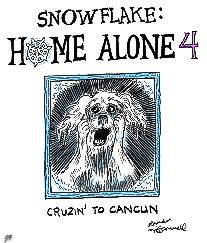
Instead, the Swift Family Cruz packed a suitcase “the size of a steamer trunk”, left their poodle, Snowflake, behind and dashed off for fun in the sun. This action contravened what CDC has recommended for nearly a year, i.e. that US residents should avoid travel to other countries. The advice was ignored but that it is the way of the Cruz. His problem virtually duplicates that of Australia’s Prime Minister, who disappeared to Hawaii, did not let us in on this voyage north, and all this while Australia burned. The American media, which is less controlled (and apparently more observant) than Australia got onto Cruz almost immediately and there he was, scuttling back to Texas mouthing a number of mutually-conflicting self-serving reasons for him going to the Mexican Resort in the first place.
The American media has shown its public service usefulness (without recourse to Facebook). “There’s no need to reiterate the extraordinarily poor timing of Cruz’s trip while Texas froze. That burro has been beaten to death, shamed, and then beaten some more. This is a look at a man who should be setting an example for the millions of Texans who are aching to travel. But in order to be able to see their families and friends again safely in the future, they’ve followed Dr. Anthony Fauci’s advice and stayed home as much as possible. They’ve worn their masks, practiced social distancing, and washed their hands diligently.”
But not our Boy, Ted.
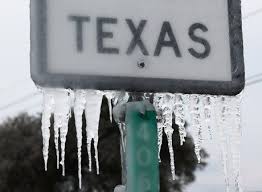
The Prime Minister apparently has stopped asking his wife Jen for advice, at least publicly. There is a political playbook, where “mistruth” is very much part of the narrative – an uncaring narrative which Trump over the years exploited even beyond the wildest nightmare of the original Florentine Editor.
Politicians who flirt with the edges of the narrative, hide in the marginalia, indulge in palimpsest or have their own scriptorium where their life becomes an illuminated manuscript finally have to face that question – are they up to the task of being a genuinely caring person, sensitive to their constituencies? Let’s face it, most aren’t. Unfortunately, the community elects images, not the sordid reality.
By the way Prime Minister, when did you last go to the bushfire ravaged communities to see evidence of the fruits of your Government’s response?
This quote below sets out the damage that Trump has done, and how an insidious callousness has invaded the proto-narcissist political mind, and unfortunately the Cruz scenario will increasingly play out, especially when nobody is told or worse ignored.
As Jennifer Rubin wrote incisively in the Washington Post in the past week: “Incompetence is not the purview of one party. But when you view politics as theater and grievance-mongering, chances are you are going to shortchange governance, elect a president with no public-sector experience, no interest in learning, no desire to hire competent people and no ability to accept responsibility, and you get something like the covid-19 debacle. Moreover, if your party is hostile to government and exercising regulatory power because it is beholden to a donor class and right-wing ideologues, you will not be prepared for disasters when they strike.”
How very true!
The King lived; the Prime Minister died

And the Answer is… a red dawn where laid morula upon blades of green urgency to become spiky quilted ectoderm sprouting teal topknot emergent wave to a new world where neighbours in serried ranks wave back until with swelling yellow belly we stand among the green detritus of yesterday proud that we alone know the answer.
I have a particular reason to remember my time in eSwatini. My wife has a friend who has a large plant nursery in Malkerns in what was Swaziland when I last was there, but is now renamed eSwatini. The Swazis have their own country, ruled by a king who has a penchant for wives. Once a British protectorate, eSwatini is a tiny enclave wedged into a corner between South Africa and Mozambique. It is one of the last absolute monarchies in the World. The capital, Mbabane, lies in the Highveld (1000+ metres), whereas Malkerns lies in the Midveld, (770m), a fertile valley where the mountains form a distant hazy rim.
This is the country like so much of Southern Africa when you leave the coast, the climate is milder, less humid but nevertheless tropical. Behind her property stretched a huge expanse of pineapple cultivation, which prompted me to write the verse which heads this piece.
Our friend’s property was unusual because close to the house she had a large dam, constructed to provide a reliable water supply for the nursery. The dam also attracted hippopotamuses, who would wander up from the river in the nearby Mlilwane wildlife sanctuary, through the pineapples, to spend quality time in the dam. Then they would leave. Several years ago, a worker accidently got between a mother and calf and was trampled to death. Otherwise, the pilgrimages have been peaceful.
More recently, a large Nile crocodile came to share the dam. Crocodiles apparently intermittently appear. This means that going outside is a hazardous exercise, especially for Suzy, her large black dog, which had to be kept inside until the crocodile was captured and returned to the river. Hippopotamuses and crocodiles will happily co-exist, but this crocodile’s presence has acted as somewhat of a deterrent to the Hippo Walk.
What I remember clearly was that the day before we left, my wife and I went for the longest walk that I had done for months because of my progressive tiredness. I knew even then that all was not well, but the walk enlivened me. I felt more freedom, less stiffness, the weakness had evaporated and the pain in my legs had been reduced to a dull ache. The pineapple stroll had been recuperative – or so I thought.
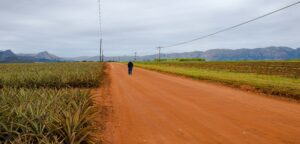
The next day, the pain, the weakness, the stiffness had come back with a bang. For the first time, my denial fell away. I knew that there was something wrong. Fortunately, the bathroom was well supplied with therapy aids which had been installed during my wife’s friend’s husband’s terminal illness.
However, it was not for some weeks later that I saw the doctor on return to Sydney, who immediately diagnosed me and ordered tests, which confirmed the diagnosis. I had seen or been close to a number of doctors in the preceding three months – and this was the first doctor who diagnosed me. Yes, the diagnostician was an orthopaedic surgeon.
As a footnote to describe the headline, King, Mswati III, has just recovered from his COVID infection. His Prime Minister was not so lucky. He died in December of the Virus. Currently, the number of infections in eSwatini is nearing 17,000 with 13,500 having recovered and there being 645 deaths. eSwatini brought in strict anti-COVID measures very early on. In perspective, the population is 1.14m. Infections seem to be dropping as the second wave rolls on.
Mouse Whisper
Tegestologists and labeorphilists. Now there are words which you don’t often use to describe obsessive losers.
Tegestologists have a great excuse to spend time in bars since they collect coasters or beermats. They should probably team up with labeorphilists, or collectors of beer bottles. Having decried the above, I must admit to souveniring the odd coaster, but as for beer bottles, I have transitory labeorphilia but only when they are full of beer.
